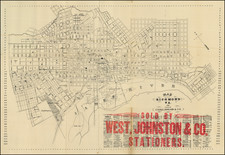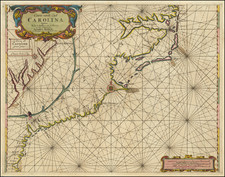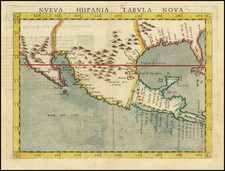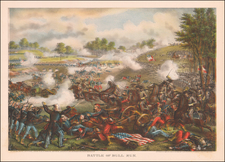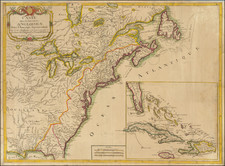The Most Important Sea Chart of the Chesapeake Published In the 19th Century
Monumental privately published navigational chart of the Chesapeake and Delaware Rivers by Fielding Lucas.
Lucas' chart is one of the most decorative and sought after 19th Century charts of the Chesapeake. Published by one of America's first great map makers and publishers, this is only chart published by Lucas, and was later used as the cover illustration for Guthorn's United States Coastal Charts, 1783-1861.
Lucas' chart illustrates inland navigation on the rivers as far upstream as Philadelphia, Port Deposit, Baltimore, Washington, as well as long distances up the Rappahannock, York and James Rivers. The meticulous soundings extend into the lower Chester River, Eastern Bay, the mouth of the Choptank, and Tangier Sound. The depiction of major shoals and the bays on the Atlantic side of the peninsula are shown in minute detail, along with 4r profile views of the shore, and tide tables for the Delaware Bay and Chesapeake Bay.
The present example also bears the paste down label of Hagger & Brother, the leading purveyors of Nautical & Scientific Instruments in Baltimore in the 1850s and 1860s.
The Maryland Historical Society notes that Lucas's "Chart of the Chesapeake and Delaware Bays" illustrates the maker's refined craftsmanship. The chart includes soundings, the location of shoals, light boats and light houses, with short descriptions of the lights carried by the different boats. Two noteworthy features are the "Tide Tables" for the Chesapeake and Delaware Bays and the series of views of Cape Henry, Smiths Point Light House, Windmill Point and Cape Henlopen. These views had appeared on Anthony De Mayne's "Survey of the Chesapeake" of 1814.
As noted by the Maryland State Archives in its description of the 1832 edition of the chart (Huntingfield Map Collection, S1832); "Lucas' primary innovation in this chart was the use of color, not adopted by the successor agencies of the US. Coast Survey until the 20th Century. . . . [At the time of its completion, it] was one of the first charts to depict the Chesapeake and Delaware Canal, completed in 1829. . . The configuration of the shoals is much more detailed than in many charts of the period." Lucas periodically updated the map between 1832 and 1859.
Fielding Lucas, the only map and chart maker operating in Maryland at the time, first issued the chart in 1829. Morrison & Hansen note that it represented an innovated use of color, which was not employed by the US Coast Survey or its successors until the 20th Century. Morrison & Hanson note that three of the four views on the map derive from British Admiralty sources.
A map of seminal importance for Chesapeake and Delaware Bay collectors.
Fielding Lucas, Jr. (1781-1854) was a prominent American cartographer, engraver, artist, and public figure during the first half of the 19th century.
Lucas was born in Fredericksburg, Virginia and moved to Philadelphia as a teenager, before settling in Baltimore. There he launched a successful cartographic career. Lucas's first atlas was announced in early- to mid-1812, with production taking place between September 1812 and December of 1813, by which point the engravings were complete. Bound copies of the atlas -- A new and elegant general atlas: Containing maps of each of the United States -- were available early in the next year, beating Carey to market by about two months. Lucas later published A General Atlas Containing Distinct Maps Of all the known Countries in the World in the early 1820s.










